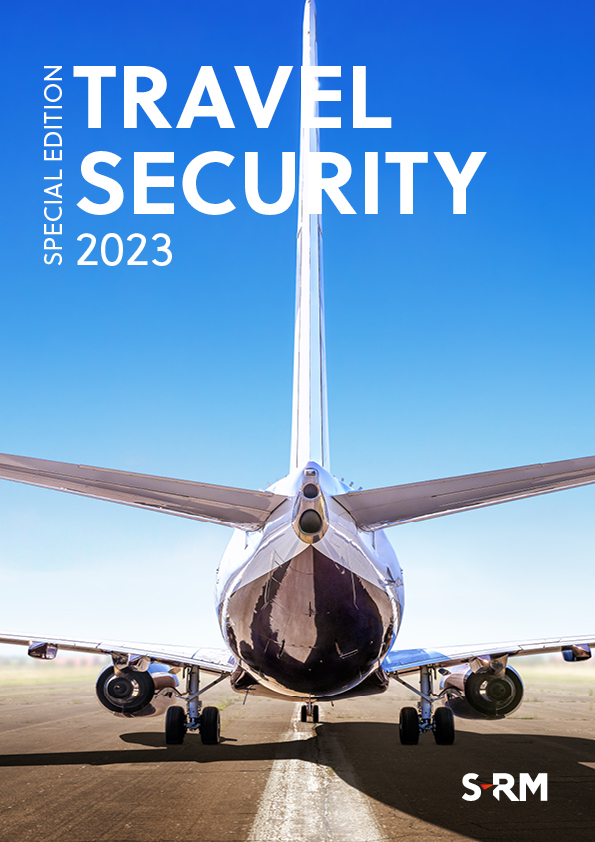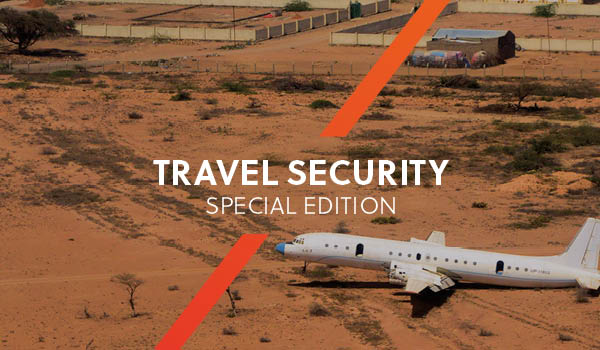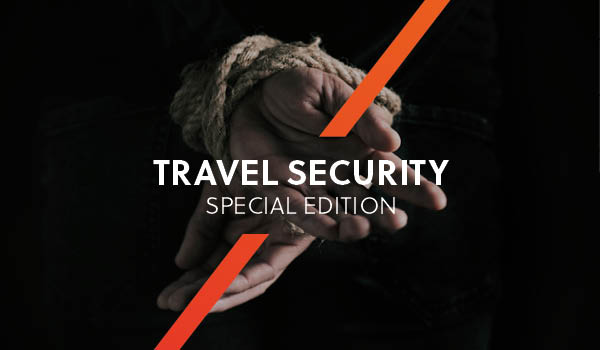Organised criminal groups have proven resilient to challenges affecting the global commercial environment since the Covid-19 pandemic and the outbreak of the Russia-Ukraine war. Such groups have exploited evolving technologies and growing industries to tighten their grip over illicit and licit markets. Erin Drake explores these dynamics, and their potential implications for the travel and commercial security landscape in the coming year.
As businesses contend with the economic and operational realities of a post-pandemic world, as well as instability driven by the ongoing Russia-Ukraine war, organised criminal groups (OCGs) have instead exploited emerging opportunities. Where governments struggle to sustain state subsidies, rising poverty levels in countries like Haiti, Pakistan and Colombia have created ideal conditions for gang recruitment amid promises of financial reward, and, in Thailand and Cambodia, Chinese gangs lure individuals with promises of employment in exchange for engaging in scams. Governments weakened by pandemic and geopolitical shocks have allowed OCGs to further embed themselves in legitimate structures through collusion with authorities. Meanwhile, advancements in technology and the digital space in recent years have enabled new tactics in traditional organised crime activities that have frustrated law enforcement’s efforts to tackle cybercrimes as well as traditional ‘offline’ crimes like kidnap, trafficking and extortion.
While organised crime primarily affects local populations rather than foreign operators or travellers, the growing presence of OCGs online and in licit sectors, and the rapid expansion of illicit markets, will heighten companies’ and travellers’ exposure to such activities in the coming year. And, for tourists, journalists, researchers, and aid workers in gang-prevalent areas in particular, there will be an ever-present threat of violence.
ORGANISED CRIME IN 2023 Three trends to watch
1 GROWTH OF ILLICIT MARKETS
The growth of illicit markets continues to drive the threat of indirect violence in locations where OCGs operate the world over, but this is increasingly prevalent in conflict-ridden areas and along porous borders. Swedish authorities have noted a rise in fatal gang violence driven by the drug trade and associated proliferation of illegal firearms, particularly in Stockholm, Gothenburg and Malmo. Ecuadorian authorities declared several states of emergency in the capital, Guayaquil, in 2022, as rivalries over cocaine networks grew increasingly violent, prompting over 70 bombing attacks in the city. Mexico’s tourist resorts in Quintana Roo have seen intensified skirmishes between rival drug cartels that have occasionally killed tourists. And, in New Zealand, an increase in drug and human trafficking, coupled with rising living costs and homelessness, has driven an unusual escalation in gang violence in 2022, including 23 drive-by shootings. Growth in the market for smuggled vehicles from South Africa to Mozambique has prompted rising hijackings in South Africa, while burgeoning fuel, weapons and drug trafficking in Nigeria and South Sudan have fuelled violent banditry.
Meanwhile, maritime authorities and companies report significant growth in smuggling routes between Latin America, South Africa and Australia. European and Balkan ports – including Constanța in Romania, Varna in Bulgaria, and Antwerp in Belgium – are emerging trafficking hubs as OCGs look for locations with lax regulations compared to traditional hotspots. The expanding presence of OCGs in these locations carries an associated threat of violence to bystanders, and legal and reputational risks for businesses, as evidenced by scandals in 2022 involving cocaine shipments discovered on commercial vessels transporting sugar, fruit and chemical products. Other markets for illegal mining, logging and commodity export syndicates also pose a growing threat to companies, journalists, researchers and activists involved in monitoring such activities. Across Mexico, Colombia, Brazil and Honduras, 20 journalists and human rights activists were killed in January 2022 alone for investigating environmental crimes. In 2023, Africa and Latin America will remain particularly vulnerable as governments struggle to combat powerful militias, syndicates and cartels.
SOUTH AFRICA’S CRIMINAL UNDERWORLDSouth Africa experienced a rise in mafia-style criminal activity in 2022, including a growing prevalence of foreign crime bosses operating cable theft and export syndicates, kidnapping and extortion networks, and illegal mining rings. Mafia-type groups have also ramped up activity in the commodities sector, with coal theft spiking in relation to soaring coal export prices. Infrastructure theft, especially copper-power cables, costs the industry between USD 295 million and USD 413 million annually, including in revenue loss and repairs. Other organised crimes that have increased include drug trafficking and a 14 percent surge in year-on-year violence in 2022 by vehicle hijacking syndicates who collude with local police. In a high-profile case, a German tourist was killed in late-2022 when criminals attempted to hijack a tourist vehicle on route to the popular Kruger National Park in Mpumalanga. Organised crime in South Africa has driven up a murder rate of 40 deaths per 100,000 people – higher than Mexico (26) and now in line with Venezuela (40.9). |
2 THE ROLE OF DIGITAL TOOLS AND AI
OCGs are increasingly leveraging opportunities presented by accelerated digitisation. Transnational OCGs operate vast networks for smuggling and illicit financial flows, and the requirement for systems to coordinate and communicate clandestinely has prompted a move into the digital space to evade detection, streamline processes, and offer services to other criminal networks. For example, in 2021/2, South Africa, Morocco and Kenya emerged as the top African providers of IP addresses linked to digital extortion. The anonymity offered by encryption technology has frustrated police, who increasingly struggle to monitor OCG communications. This task is further hindered by the popularity of cryptocurrencies for laundering (which increased by 30 percent from 2020 to 2021), enabling OCGs to bypass traditional financial systems and associated oversight that could increase the potential for detection.
Rapid digitalisation and the benefits offered by such technologies and tools – which become more sophisticated by the day – will likely encourage OCGs not already utilising such tools to aggressively adopt these tactics over the coming year. Businesses and travellers, whose social media posts and online activities will be increasingly scrutinised for exploitable information, will be subject to greater vulnerability in the online space, making them attractive targets for cyberextortion and virtual kidnappings.
VIRTUAL KIDNAPPINGS IN NORTH AMERICAIncreased social media use (which grew from 4.2 billion to 4.62 billion users globally between 2021 and 2022) has enabled criminal groups to access personal, publicly shared information on prospective victims and expand their tactics. For example, two young victims were rescued in separate incidents in Utah and Texas after older males convinced them to run away from home, communicating with them on the Meta-operated virtual reality platform, Oculus. Although there are no official statistics regarding virtual kidnappings in North America, anecdotal reports from various police departments indicate that such scams are proliferating among immigrant populations and wealthy communities. Such reports note Long Island, Chicago, western Maryland and El Paso in Texas as hotspots. The FBI warns that the numbers represent only a fraction of reported cases as victims are often embarrassed to admit they have been scammed. In Canada, North Vancouver police have also cited an anecdotal uptick in cases. Ransom demands usually range from USD 1,000 to 5,000 – small amounts that can be quickly paid online, not requiring authorisation or delays as payments clear. But, in recent cases, some high-profile individuals in the US entertainment industry have been targeted for amounts upwards of USD 10,000. As is the case in Latin America, scammers rely on creating a sense of fear and urgency, and victims may be more willing to quickly pay smaller amounts in a panic. With the emergence of artificial intelligence-powered technology like synthetic media or ‘deepfakes’ and its growing use in virtual kidnappings elsewhere, like Latin America, such dynamics can make a fake kidnapping seem more credible, allowing kidnappers to raise ransom demands. |
3 INFILTRATION INTO GROWING COMMERCIAL SECTORS
Organised crime is also increasingly embedded in legitimate commercial activities, allowing groups to disguise operations and exploit growing markets. Following the pandemic and Ukraine conflict, OCGs have viewed the booming healthcare and green energy sectors (driven by global efforts towards a green energy transition) as attractive investments. As the Ukraine conflict’s consequences for Europe’s energy sector expedites plans for clean energy, Italian mafias have pursued wind energy contracts. Europol, the EU’s law enforcement agency, also reports that organised crime has become prevalent in the healthcare sector since the pandemic, through the production and sale of counterfeit goods like medical equipment and vaccines.
Other industries have also been subject to expanding and intensified organised crime that will drive the potential for violence in 2023. For example, OCGs have solidified their foothold in the construction industry in several countries, including in Romania, where private companies are scammed into hiring forced labour. In South Africa, construction mafias have escalated extortion and kidnapping activities targeting infrastructure companies, driving a surge in violence on project sites. Meanwhile, in Malta, police have cracked down on a growing Italian mafia presence in the online gaming sector, in which groups like Passo di Rigano and La Noce purchase and operate legitimate platforms authorised by Italian authorities, but also launder proceeds from illegal betting and extortion.
As OCGs look for new ways to evade authorities and generate revenue, commercial activities that provide opportunities for exploitation will likely become more vulnerable to infiltration in the coming year, driving threats of reputational damage, legal action, and violence to companies targeted in such activities.
ITALY’S MODERN MAFIAItaly’s mafia groups have sought to move away from violence and intimidation towards more refined tactics that are less likely to draw attention. Italian authorities have warned that this has included intensified efforts to corrupt government officials, particularly by influencing public acquisitions with lucrative government subsidies. Recently, mafia groups have invested increasingly in clean energy projects rapidly emerging as a result of Europe’s longer-term energy concerns, especially in the south where several wind farms are located, and where such groups have a greater presence. This will drive increased scrutiny for commercial operators involved in the sector. While it is unlikely that mafias will relinquish violence, intimidation tactics, including online social media campaigns are on the rise. Powerful mafias like the ’Ndrangheta’s leadership have posted images of guns and threats to subtly drive the credibility of extortion threats. |




 Email Erin
Email Erin





 @SRMInform
@SRMInform
 S-RM
S-RM
 hello@s-rminform.com
hello@s-rminform.com

